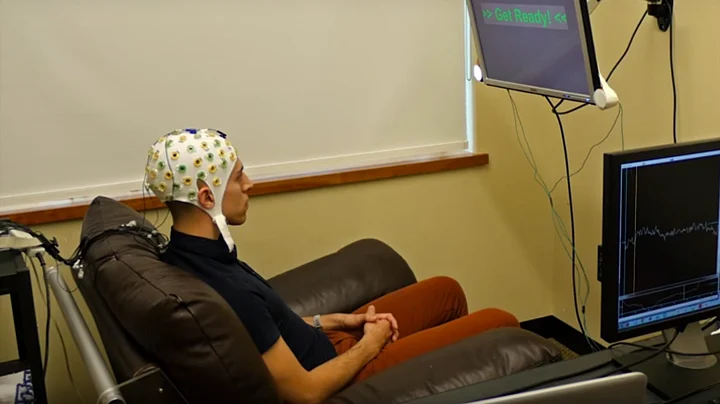Two people are sitting almost a mile apart, in different rooms, ‘talking’ to each other, without saying or writing a single word – they’re communicating directly with their brains. Yes, we’re in our right minds.
Telepathy isn’t just science fiction any more. Scientists at the University of Washington have conducted a successful experiment wherein they linked two brains through the Internet and asked the volunteers to take a quiz among themselves.
In the experiment, two participants wear a cap connected to an electroencephalography machine, a non-invasive device to monitor electrical signals in the brain. The first participant – the respondent – is shown an object, which can be anything from food to an animal, on a computer screen, and the second participant – the inquirer – sees a list of possible objects and associated questions.
With the click of a mouse, the inquirer sends a question and the respondent answers “yes” or “no” by focusing on one of two flashing LED lights attached to the monitor, which flash at different frequencies.
Participants were able to guess the correct object in 72 percent of the real games.
The experiment evolved out of research by an Indian-origin scientist Rajesh Rao, who’s a professor of computer science and engineering at the University of Washington, on interfaces that enable people to activate devices with their minds. In 2011, Rao began collaborating with fellow researchers Andrea Stocco and Chantel Prat to determine how to link two human brains together.
This is the most complex brain-to-brain experiment, I think, that’s been done to date in humans.
— Andrea Stocco, Researcher, University of Washington
The future is even more exciting as the team tries to transfer brain states electronically, that is, sending signals from an alert person to a sleepy one, or from a focused student to one who has attention deficit hyperactivity disorder, or ADHD.
When the non-ADHD student is paying attention, the ADHD student’s brain gets put into a state of greater attention automatically.
— Chantel Prat, Researcher, University of Washington
Here’s to taking greater control of our brains. But will this lead to greater peace of mind? Share your thoughts in the comments below.
(At The Quint, we question everything. Play an active role in shaping our journalism by becoming a member today.)
